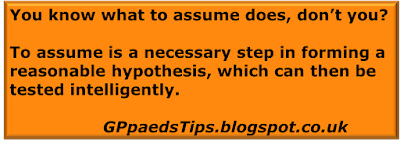A common presentation in young children is the mysterious limp. Transient synovitis (irritable hip) of the hip is the most common cause of an unexplained limp under the age of 6. The current usual practice is to make the diagnosis of irritable hip on clinical grounds. It is no longer routine practice to support this diagnosis with blood tests or imaging. This development in practice opens the possibility for a young child with a mysterious limp to be managed outside of a hospital setting where appropriate.
What is transient synovitis of the hip (irritable hip)?
The cause of transient synovitis of the hip is unclear. It is presumed that most cases are a reactive arthritis with a viral trigger. Injury can also be implicated but it is unclear whether such associations are causal or simply bring the problem to someone’s attention. It is also common to find typical features of transient synovitis of the hip in children who have no history of viral illness or injury. There is therefore no need to rely on a history of a possible trigger to make the diagnosis.
As the name suggests, there is inflammation of the synovium of the hip. Ultrasound may show or synovial thickening or increased fluid. Inflammatory markers are not usually significantly raised. Neither of these investigations is reliable and no longer done routinely since the gold standard is clinical diagnosis.
How is transient synovitis of the hip diagnosed?
Typical features of transient synovitis of the hip are:
A typical presentation, absence of red flags and a classical course of the symptoms usually make it obvious when the problem is irritable hip. If all of these things apply, management is watchful waiting with good safety netting advice.
Edward Snelson
@sailordoctor
What is transient synovitis of the hip (irritable hip)?
The cause of transient synovitis of the hip is unclear. It is presumed that most cases are a reactive arthritis with a viral trigger. Injury can also be implicated but it is unclear whether such associations are causal or simply bring the problem to someone’s attention. It is also common to find typical features of transient synovitis of the hip in children who have no history of viral illness or injury. There is therefore no need to rely on a history of a possible trigger to make the diagnosis.
As the name suggests, there is inflammation of the synovium of the hip. Ultrasound may show or synovial thickening or increased fluid. Inflammatory markers are not usually significantly raised. Neither of these investigations is reliable and no longer done routinely since the gold standard is clinical diagnosis.
How is transient synovitis of the hip diagnosed?
Typical features of transient synovitis of the hip are:
- Unexplained onset of limp (no history of more significant injury consistent with fracture)
- Well and afebrile child with no signs or symptoms of other significant acute illness
- Unilateral hip signs – painful or reduced range of movement
- Septic arthritis - usually presents with fever and complete refusal to weight bear
- Osteomyelitis - usually febrile and there is localised tenderness or swelling in the bone
- Toddler fracture - undisplaced fracture of the tibia usually presents with complete refusal to weight bear and has localising signs in the tibia (tender or slightly warm to touch)
- Other significant fractures are usually accompanied by localised swelling or tenderness and are clinically obvious.
- Juvenile idiopathic arthritis (JIA) - This is very uncommon under the age of 6. Obvious swelling of a single joint (without signs of infection) may indicate a transient arthritis of a joint other than the hip. If the affected joint is the hip and the diagnosis is JIA, this will probably be clinically indistinguishable from irritable hip. However the child would only need to be referred if the arthritis persisted for several weeks, so analgesia and watchful waiting is the initial management in any case. If multiple joints are involved or symptoms cannot be managed easily, early referral is indicated.
- Perthe's disease - The cause of this disease of the hip is unknown. The femoral head becomes avascular and breaks down. The typical age is a school age child but there is some overlap with the age at which irritable hip presents. The unexplained limp in a child over the age of six should raise suspicion of Perthes disease. Under the age of six, progressive symptoms or symptoms that fail to improve after a few days are concerning.
- Non- musculoskeletal - Limp may be a sign of pathology unrelated to the lower limb. Abdominal pain or scrotal pain can cause a child to limp.
A typical presentation, absence of red flags and a classical course of the symptoms usually make it obvious when the problem is irritable hip. If all of these things apply, management is watchful waiting with good safety netting advice.
Edward Snelson
@sailordoctor


























